If you’re looking to move beyond your camera’s built-in light meter, then a handheld unit is absolutely necessary. By measuring the ambient light that’s available, you can get better exposure values that fully preserve the highlight and shadow details in your images! So what is the best light meter for photography? Let’s see what’s available in 2021!
Why Do I Need a Light Meter?
If you’ve read your camera manual at all, you’re probably aware that your camera has a light meter inside of it already. So why bother with a handheld light meter?
What handheld light meters do is measure the amount of ambient lighting, or rather, the light that’s falling onto your subject. The light meter in your camera measures light reflected from your subject. It can’t tell you how much light there actually is, nor can it check different areas within a scene.
If you are a studio portrait, still life, or product photographer, a light meter is a must-have accessory because they allow you to measure both flash power and ambient lighting, neither of which the camera’s built-in light meter can do. TTL flash is fairly intelligent nowadays but it’s best to be using a light meter for exact exposure rather than having to make continual flash adjustments for certain subjects.
Learn more about how Photography light meter works.
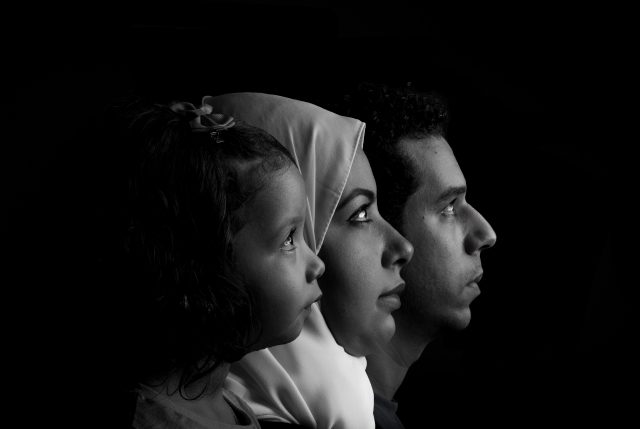
Read here about creating a family portrait composition studio shot.
What Is The Best Light Meter For Photography?
- Sekonic LiteMaster Pro L-478DR-U Light Meter With Exclusive USA Radio Frequency
- Dr.Meter 1330B-V Digital Illuminance/Light Meter, 0-200,000 Lux Luxmeter
- Sekonic L-308S Flashmate Digital Incident, Reflected & Flash Light Meter
- Sekonic L-398A Light Meter Studio Deluxe III
- Gossen GO 4033-2 Digipro Light Meter F2
- Sekonic Speedmaster L-858D-U Light Meter
Let’s talk about each in depth.
1) Sekonic LiteMaster Pro L-478DR-U Light Meter With Exclusive USA Radio Frequency
My top pick for the best photography light meter of 2021 has to be the Sekonic LiteMaster Pro. Thanks to the large 2.7-inch touchscreen you have plenty of control over the unit. At ISO 100, this unit can operate between -2 to 22.9 EV range and it also pairs with video cameras thanks to the Cine and HD Cine modes. These allow shutter angles of 1 to 358 degrees as well as a frame rate of up to 1000 fps.
Built into the unit is a radio antenna and module that allows both flash control as well as light metering up to 30 meters away. And you can buy with confidence thanks to the 3-year warranty included with each purchase.
2) Dr.Meter 1330B-V Digital Illuminance/Light Meter, 0-200,000 Lux Luxmeter
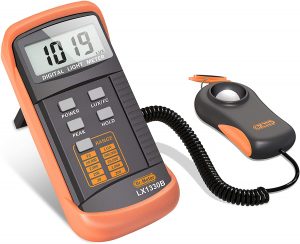
For budget-minded shoppers, the Dr. Meter is hard to beat. At only $40.99 it provides excellent functionality at only 1/10th the cost of high-end designs. Four range settings; 0-200, 2,000, 20,000, and 200,000 allow you to customize the sensitivity and accuracy of your readout.
Depending on the sensitivity chosen, you have ±3% accuracy from 0-20,000 lux and ±5% once you are over 20,000 Lux of intensity. Each unit also includes a 1-year warranty.
3) Sekonic L-308S Flashmate Digital Incident, Reflected & Flash Light Meter
Weighing in at a svelte 96 grams and using a single AA battery, this is one of the lightest professional light meters available. And certainly the smallest Sekonic Light Meter available!
Light is sampled on a non-retractable hemisphere that, when open, measures reflected light, and when closed, samples incident (ambient) lighting. A flat-top illuminist also allows you to measure incident lighting on flat surfaces. Exposure readings are displayed in full, half, or 1/3rd stop increments and the unit is accurate to within 0.1 EV.
The ISO range is from 3 to 8,000 and it can read an f/stop range of f/0.7-f/90, as well as shutter speeds of 1/8000ths-60 seconds. At ISO 100, this unit can operate between 0 to 19.9 EV range. The only real disadvantage is the plastic construction, which feels cheap, but helps make the unit both light and affordable.
4) Sekonic L-398A Light Meter Studio Deluxe III
With its analog display meter needle and dial that displays the full range of exposure settings, the Sekonic L-398A is a compact, easy to use unit that’s stylish as well as effective. You have the option of using a lumidisk for measuring light intensity in a given area or switching to a lumigrid for reflected light readings, similar to how an in-camera light meter measures incoming illumination.
Another of the main draws of this unit is that it uses no batteries whatsoever! Instead, it relies on the light it measures for power, using a photoelectric cell to provide continual energy. The ISO values range from 6 to 12,000 in 1/3rd step increments and the shutter speeds range from 1/8000ths-60 seconds. Lastly, aperture values can be read from f/0.7 to f/128 and cine frame rates of 8 to 128 fps.
5) Gossen GO 4033-2 Digipro Light Meter F2
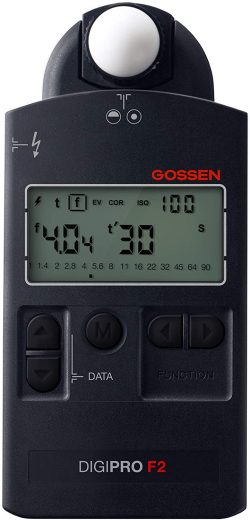
The Gossen GO is the perfect beginner’s light meter thanks to its simple, intuitive interface! The directional arrows on the front of the unit allow for both left and right-handed operation, with a central M button for light metering.
Capable of reading both reflected and incident lighting, the Gossen GO has an aperture range of f/1 to f/90, a shutter speed sync range of 1/1000ths-1 second, and an ISO range of 3.2-8000. For videography, select the shutter speed function and set it beyond 1/8000ths of a second.
Unfortunately, the build quality isn’t quite what we’d expect for the price as the Gossen GO favors plastic over metal. But in terms of straightforward functionality, intuitiveness, and size, it’s hard to beat this model!
6) Sekonic Speedmaster L-858D-U Light Meter
What makes the Speedmaster L-858D-U special is that it can meter accurately in light conditions as low as 0.1 Lux. Being as sensitive as it is, it has extended ISO values (up to ISO 13,107,200) and shutter speed ranges, making this the low light meter of choice for cinematography.
It also can measure the duration of your flash as well as high speed sync strobes, which is extremely useful for freezing the action in high speed photography. With a maximum shutter speed of 1/16,000ths of a second, this unit is ideal for a variety of flash scenarios!
Along with Aperture and Shutter Priority modes, the Speedmaster L-858D-U also includes ISO priority, giving you full flexibility for metering. While pricier than the rest, this is my top pick for the best light meter for photography!
Related posts:
Photography Light Meter – Camera Metering Vs Handheld Metering
What is The Low Key Photography
Photography Lighting Techniques
How to Get Black Background Photos
Featured photo by No film School.
Thanks for reading, I hope you enjoyed the article if you have any questions just post them below & I will be happy to answer you.
If you enjoy the site, don’t forget to subscribe, we will only inform you when a new article is posted.

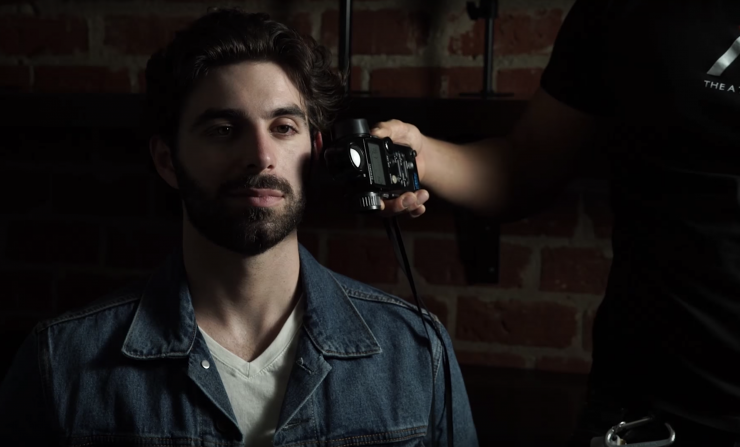


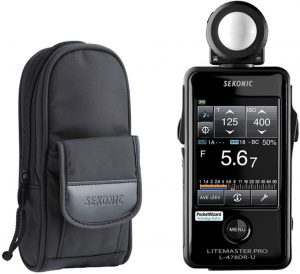
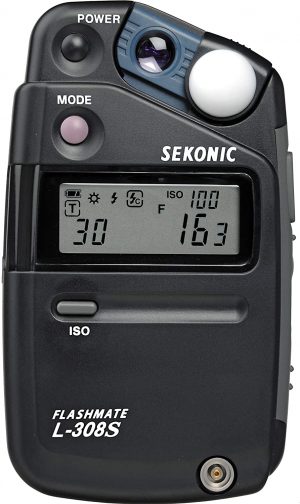
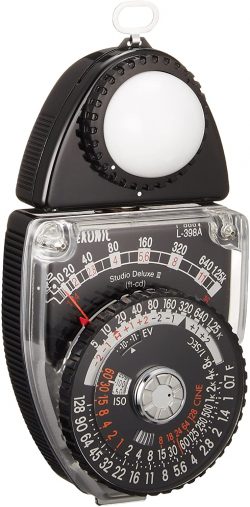
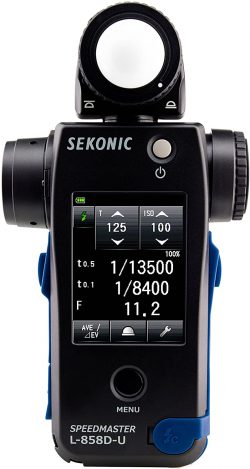

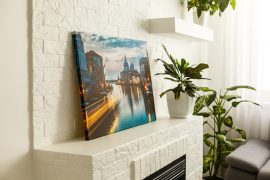
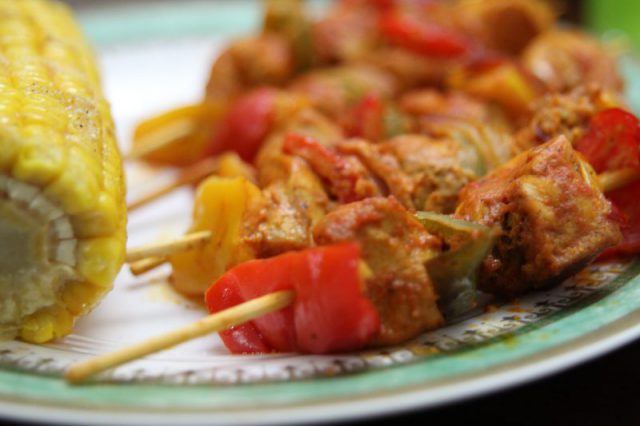
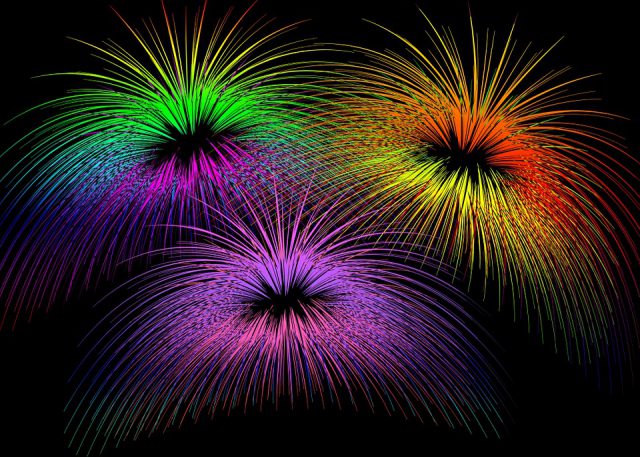
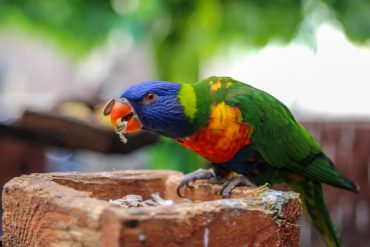
Sounds great. Regardless of how refined our camera meters have become there is as yet an argument or for utilizing a handheld light meter.
Handheld meters are exact and can give more data about the light in our scene and they can help us in acquiring the ideal openness for our scene.
Thank you for the very informative article over light meters! Light meters are so very important I believe, for the perfect photo. I know it is number four on your list, but I really like Sekonic L-398A Light Meter Studio Deluxe III. It does not use batteries and it seems very simple and easy to use for someone like myself hahah!
Glad you liked the post Jessie!
Over the years, I have purchased a Sekonic L-758DR, a Gossen Digisix 2, and a Lumu light meter. And recent a Sekonic L-308S. And this last one is now my favorite light meter, above all those others. Why? Well, the L-398A is solid and feels solid. No sticky push buttons meaning nothing to wear out or pop-off. The needle button on this is a simple spring. No circuit boards to replace.
Thanks for your input Paolo!